We’re always excited to write about a product from Kaged Supplements – especially if it involves a protein powder or any form of supplemental protein.
Kaged has proven that they’ve got an awesome protein game over the last few years. Back in 2018 they released their Kaged Whey Protein Isolate, an exceptionally pure whey product that has become one of PricePlow’s favorite products in the category.

It only took us about 8 years, but we’ve finally done a deep dive on the micellar casein protein in Kaged’s Casein!
But it was actually Kaged Casein that came before that — yet we never blogged about it… until now! Formerly known as Kasein, it’s now properly named Casein.
Get ready to go on a deep-dive about casein protein:
Kaged Protein Began with Casein
So today, we’re finally writing about Kaged Casein, the other premium protein powder from Kaged. Subject to the same rigorous quality control as their Whey Protein Isolate, Kaged Casein consists primarily of casein isolate, the other fraction of milk protein that, together with whey, makes up milk protein as a whole.
As we’ll see, casein and whey have their own strengths and weaknesses – and in one particular use case, casein is the form of protein you’ll want to take.
Let’s dig in, but first, check PricePlow Kaged news and deals:
Kaged Casein – Deals and Price Drop Alerts
Get Price Alerts
No spam, no scams.
Disclosure: PricePlow relies on pricing from stores with which we have a business relationship. We work hard to keep pricing current, but you may find a better offer.
Posts are sponsored in part by the retailers and/or brands listed on this page.
This area is reserved for Team PricePlow's upcoming Ingredients video.
Subscribe to our channel and sign up for notifications so you catch it when it goes live!
Note: Below, we get into the benefits of protein in order to set the stage for casein protein. If you just want to see the Casein label, head to the Casein ingredients area.
Protein: A Primer
Post-workout protein shakes are a familiar ritual for almost all weightlifters and plenty of athletes, too.
There’s good reason for sticking to this practice: Research is mounting that the magnitude of your body’s anabolic response to resistance training is determined in large part by the amount of protein that you eat.[1]
So how much protein do we need?
Research seems to indicate that the gains on additional protein intake begin to decline around 0.75 grams per pound of body weight per day.[2] Taking a double 95% confidence interval – meaning that you find the point of diminishing returns and then add two standard deviations of daily protein intake to that figure, just to be extra sure you’re not leaving any gains on the table – that number goes up to 0.82 grams per pound of body weight per day.[3]
RDAs are too low for athletes!
That figure is obviously much higher than the current United States Department of Agriculture’s Recommended Daily Allowance (RDA) for dietary protein, which is currently sitting at 0.8 grams of protein per kilogram of body weight, or 0.36 grams per pound.[4]
But remember, the RDA is set for average, sedentary people who just want to avoid muscular atrophy (the formal term for maintaining nitrogen balance). It’s not intended as a guide for athletes or bodybuilders. If you’re trying to build as much muscle and recover as much from intense exercise as you can, you’re going to need more protein than the RDA suggests.
One peer-reviewed study from 2016, authored by Dr. Guoyao Wu of Texas A&M, spells it out for us:
“Based on short-term nitrogen balance studies, the Recommended Dietary Allowance of protein for a healthy adult with minimal physical activity is currently 0.8 g protein per kg body weight (BW) per day. To meet the functional needs such as promoting skeletal-muscle protein accretion and physical strength, dietary intake of 1.0, 1.3, and 1.6 g protein per kg BW per day is recommended for individuals with minimal, moderate, and intense physical activity, respectively.”[5]
Now, that’s not as much protein as the oft-cited “1 gram per pound of bodyweight per day” that you hear frequently in bodybuilding circles, but it’s still quite a lot of protein.
For context, the average American adult eats about 88 grams of protein per day – using our model based on the double 95% confidence interval, that would be sufficient for an athlete weighing about 107 pounds.
A sedentary person could get away with 88 grams per day if they weighed 244 pounds.
So you can see that physical activity can dramatically increase your protein requirements.
If you’re doing a three day split, say push-pull-legs, with cardio on your off days, you’re much safer betting on the 0.82 grams per pound of bodyweight figure.
Let’s say you’re a 175-pound man who’s highly active – using the figures cited above, you’re going to need somewhere between 131 grams and 144 grams of protein per day to maximize your muscle gains from exercise.
As we’ve seen, that’s way more protein than is afforded by the Standard American Diet, aptly abbreviated as SAD.
The difficulties compound if you’re going through cutting and bulking cycles. Cramming enough protein into your diet on a cut can be tough, since whole-food protein sources typically come with extra carbs and fat as well.
Macronutrient Targets Are Way Easier To Hit With Protein Powder
That’s where Kaged Casein comes in.

With a new tagline of “Never Stop Evolving”, Kaged Muscle is now KAGED. It’s all discussed in episode #058 of the PricePlow Podcast.
A quality protein powder like Kaged Casein is almost pure protein. About 90% of the calories in a serving of Kaged Casein come from its 26 grams of protein.
That makes it much easier to push your macronutrient ratios in the right direction, especially when you’re restricting calories.
The Thermic Effect of Protein Makes Leaning out Easier
Another benefit of eating a diet higher in protein is that the thermic effect of food is higher for protein than it is for carbohydrates or fat.[6]
In fact, when researchers feed study participants a variety of diets that are equal in calorie content, but vary by macronutrient composition, they find that people eating the higher protein diets actually have a slightly higher resting metabolic rate (RMR) than those eating less protein.[7]
Protein Increases Satiety – Naturally Reducing Appetite
In one study, researchers found that people who adopted a diet with 30% of total calories from protein spontaneously ate 441 fewer calories every day, compared to a control group.[8] According to the theory that each pound of body fat contains about 3,500 calories, that means you could expect to lose almost a pound of body fat per week by adopting this style of diet – without consciously restricting your calorie intake.
Individual results may vary, but if you’re trying to lose weight or build muscle, jacking up the protein intake is going to make it easier one way or another.
Kaged Casein Ingredients
In a single 1-scoop (33.3 g) serving of Kaged Casein, you get the following:
-
Micellar casein isolate – 26 grams of protein
The main ingredient of Kaged Casein is micellar casein isolate, a protein fraction that makes up the majority (about 80%) of milk protein.
Like whey, casein is an excellent source of branched-chain amino acids (BCAAs) and the other essential amino acids (EAAs). However, unlike whey, casein is not rich in cysteine,[9] an important glutathione precursor.
However, casein’s ability to build muscle is in no way inferior to whey’s, and under certain circumstances, it’s a better choice of supplemental protein.
Casein vs. Whey
If you’ve been around the fitness world for any length of time, you’ve probably noticed that whey protein is the most common type of supplemental protein on the market.
There are good reasons for this – whey is rapidly digested and highly bioavailable, making it an excellent choice for fast recovery from a workout.
This leads to the perception that whey is better than casein at supporting recovery and muscle growth – but when it comes to these two aspects of protein effectiveness, there’s plenty of evidence that casein is just as good as whey!
For instance, in one study from 2013, researchers randomized 16 female collegiate basketball players to a whey group or a casein group, and tracked their response to 8 weeks of physical training. The variables measured throughout the study period included body fat, lean mass, fat mass, leg press 1 rep maximum, bench press 1 rep maximum, vertical jump height and broad jump height. At the end of the study period, the researchers concluded that both types of protein caused significant increases in the variables measured.[10]
Furthermore, there was no significant difference between the effect size of the casein and that of the whey.[10]
Casein’s Special Use Case: Pre-Sleep Protein Supplementation
Another study, this one from 2018, randomized participants to receive either low-dose (24 g/day) or high-dose (48 g/day) supplements of either whey or casein 30 minutes before sleeping. That’s a little confusing, so just to be clear — there were five experimental groups in this study: low-dose whey, high-dose whey, low-dose casein, high-dose casein, and finally, the placebo group.[11]
The researchers then tracked each group’s resistance exercise (RE) volume – that is, the amount of work each group was able to do before reaching exhaustion – as well as their resting metabolic rate (RMR), defined as the number of calories their bodies were burning each day at rest.
Interestingly, of the four groups getting an “active” supplement, only the high-dose casein group showed increases in RE and RMR.[11]
That’s a somewhat counterintuitive result, so we want to emphasize it: The group receiving high-dose casein 30 minutes before going to sleep had a faster metabolism than all the other groups.[11]
How much faster? Only about 4% faster,[11] so it’s not going to make a huge difference to your diet.
But the effect of the casein on the participants’ metabolisms can give us some insight into why casein is uniquely suited for pre-sleep supplementation.
Casein Digests More Slowly, Spikes Insulin Less
We’ve all observed, at one point or another, how milk will curdle when exposed to something acidic. Mixing milk with lemon juice is the classic example that we’re probably all familiar with.
Well, milk protein overall is about 80% casein by weight.[12]
So you’d expect casein to behave more or less like whole milk does when subjected to an acidic medium, like stomach acid. And as it turns out, that’s exactly what happens. When casein comes into contact with the acid in your stomach, it curdles and clumps together, which slows the rate of gastric emptying.[11]
The upshot of this is that casein takes much longer to digest than whey does.
This is illustrated well by a 2009 study in which researchers randomized participants to one of three groups: a whey group, a soy protein isolate group, and a casein group.[13]
Although the area under the curve (a measure of total effect) is similar for whey and casein, casein causes a much more gradual, sustained release of amino acids into the bloodstream after ingestion.[13]
A similar effect is observed with insulin – but in this case, the distribution isn’t all that’s different. As is evident from the graph, the total insulin response to casein is significantly lower than whey’s (and soy’s, for those of you who think “plant-based” nutrition is somehow inherently superior to animal nutrition).[13]
This has two significant knock-on effects:
First, although the level of essential amino acids (EAAs) in your blood doesn’t spike as high when taking casein compared to whey, EAA levels stay elevated longer. You can see from the first chart that around the 120 minute mark, amino acid blood levels in the group taking whey drop quite a bit lower than those in the casein group, and remain lower for the rest of the observation period.[13]
But that graph only tracks amino blood levels over 3 hours. In reality, that’s just the beginning of the story with casein digestion, a process that can take 7 hours to complete.[14]
Casein’s ability to supply your body with surplus protein basically all night is a huge part of the reason it’s so effective as a pre-sleep supplement. Pair this with the relatively low insulin response – which is a good thing because elevated insulin levels will impair fat burning[15] – and you have a situation with the absolute best of both worlds:
Casein Drives Muscle Synthesis, Without Impairing Fat Burning
Supplementing with casein before bed extends the anabolic response, a process that consumes energy in the form of calories, without suppressing the fat burning that naturally occurs during the fasted state we enter while we’re asleep.
Although the research on this is not conclusive, it’s the opinion of the PricePlow writing staff that this metabolic-upside-without-downside situation is why you see, in some studies, a bump in the RMR (or BMR, as it’s sometimes written) of people who supplement with casein before bed.
In day-time studies comparing casein and whey, where the two proteins go head-to-head as part of mixed macro meals, there is no observable metabolic advantage of casein over whey.[11,13] The most plausible explanation for this, in our opinion, is that the rest of the meal is elevating insulin to the point where casein’s unique advantage becomes irrelevant.
When To Take Casein: After Exercise, Before Sleep
This really drives home the unique power of casein as a pre-sleep supplement. It does best when used after exercise at a time where it will be digested as you enter a fasted state, allowing you to burn fat while building muscle.
-
Medium Chain Triglyceride (MCT) Oil – 1 gram
Medium-chain triglycerides (MCTs) are defined as fatty acids whose molecular chains contain between six and 12 carbon atoms.[16-19]
When you eat MCTs, they get taken to your liver, which converts them into ketone bodies.[20] If you’ve been hanging around the nutrition space in any way during the last decade, you’ve likely heard all about ketone bodies and the many benefits of burning ketones for cellular energy.
If you’re taking Kaged Casein immediately before bed – presumably, at least 2 hours after dinner – then you are in a position to get the most ketone production possible out of the MCTs that it contains.
MCTs can provide your body with a form of energy that, much like casein, won’t spike your insulin or glucose levels to the point where fat burning is impaired. MCT consumption has been shown to increase RMR, accelerate fat loss, improve brain health, and decrease appetite.[16-18]
A note on the Calcium content – 608 mg (47% DV)
Although our dietary requirement for calcium actually goes up as we age,[21] in practice, most Americans eat less calcium as they get older.[22]
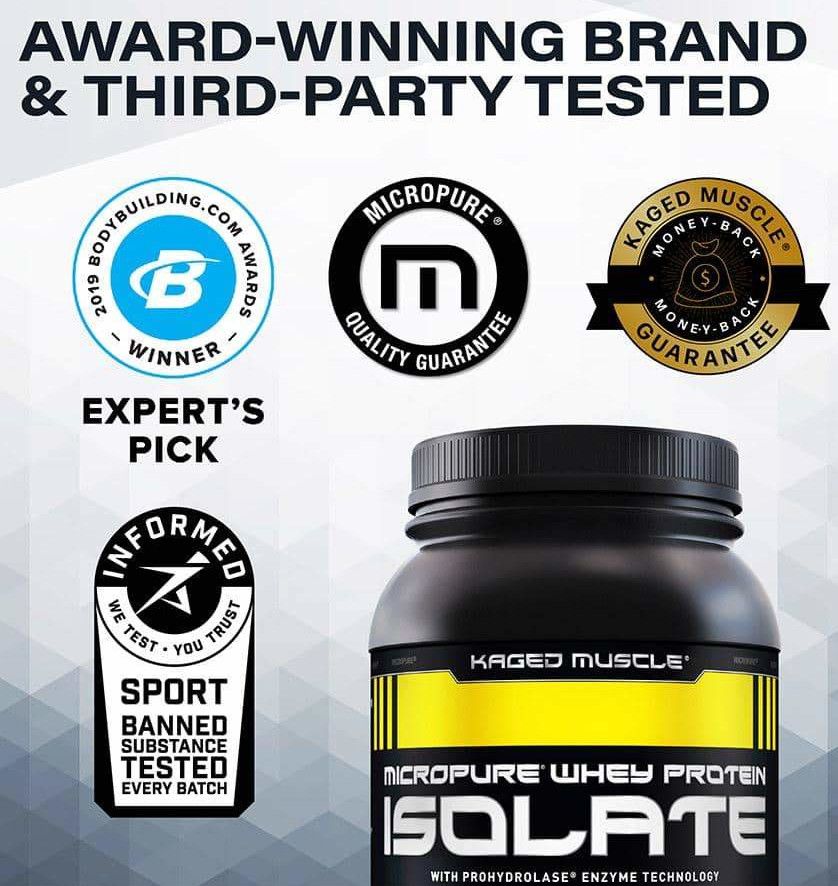
Statistically speaking, most of you reading this article could probably benefit from a little extra calcium, which is contained naturally by casein isolate – but the problem is especially acute if you’re following a low-calcium way of eating, like Paleo (which eschews dairy, despite loading up on other animal foods) vegetarianism, or veganism.
Bear in mind that although the nominal calcium content of a plant-based diet may be equivalent to what you could get from an omnivorous diet, the bioavailability of calcium in plants is affected by the phytic acid and oxalic acid content of the particular plant being eaten.[23]
Flavors Available
The vanilla flavor originally blew us away in our first review in 2016 (shown below), but now there are a couple other flavors:
So Casein is:
- Gluten Free
- Soy Free
- Banned Substance Free (Informed Choice and Informed Sport)
- Contains No Artificial Flavors or Colors
- Third Party Tested
- 100% Micellar Casein Isolate
- Tastes Amazing
- Less than 1g of Lactose per serving
- Sustained Release
As you can see, Kaged Casein was formulated to provide the consumer with the best product possible. Pair this with Kaged Whey Protein Isolate and you’ll have the perfect stack to maximize muscle protein synthesis, prevent muscle protein breakdown, enhance recovery and performance!
The Kaged commitment to quality
So why do we love Kaged protein so much?
Short answer: It’s their commitment to quality. Kaged’s protein powders are third-party tested by Informed Choice and Informed Sport to ensure they’re not contaminated with any banned substances, making the Kaged line an awesome choice for competing athletes, or anyone who cares to know what’s really in their supplements.
But beyond that, it’s because they taste amazing – especially that vanilla flavor of Casein!
Kaged Casein – Deals and Price Drop Alerts
Get Price Alerts
No spam, no scams.
Disclosure: PricePlow relies on pricing from stores with which we have a business relationship. We work hard to keep pricing current, but you may find a better offer.
Posts are sponsored in part by the retailers and/or brands listed on this page.


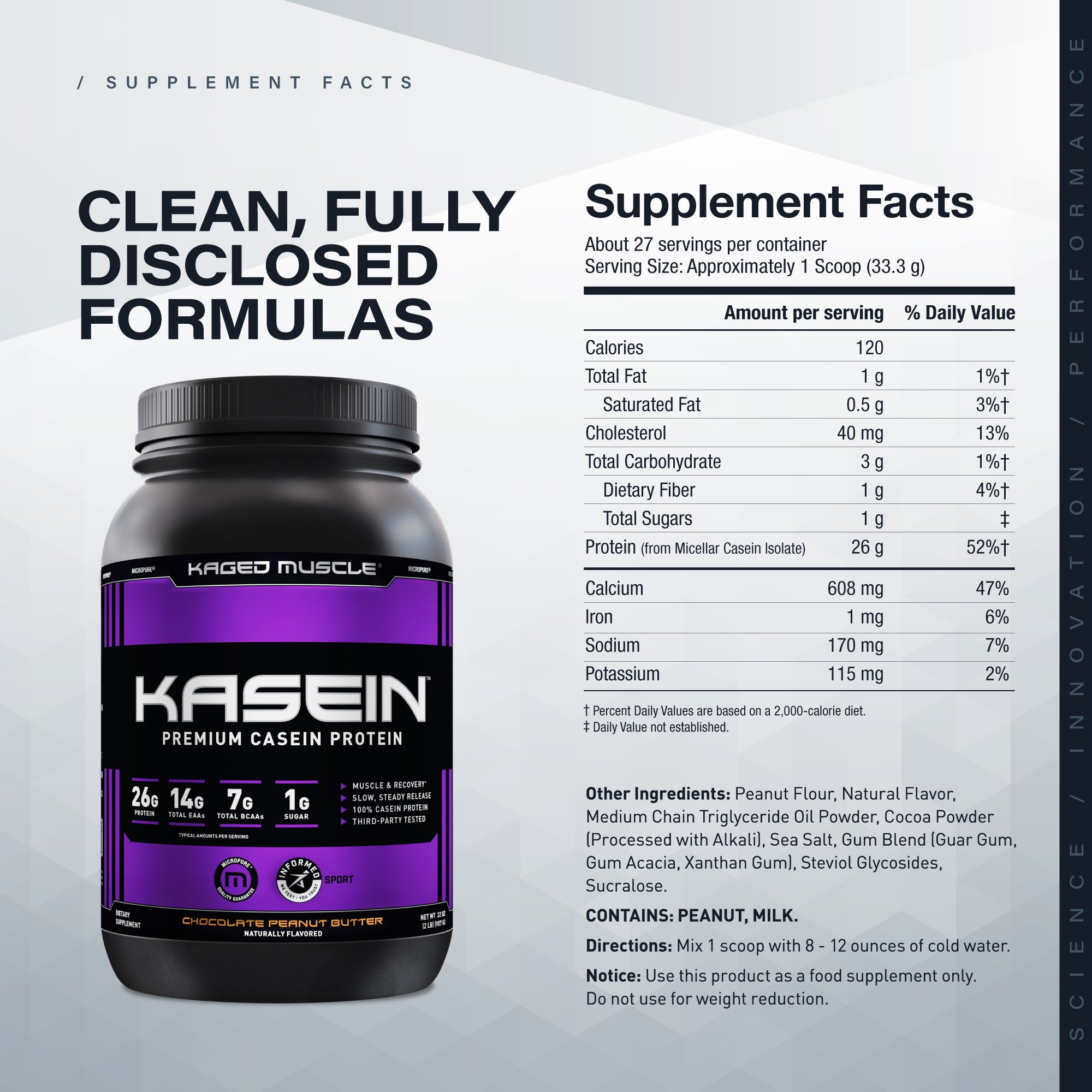
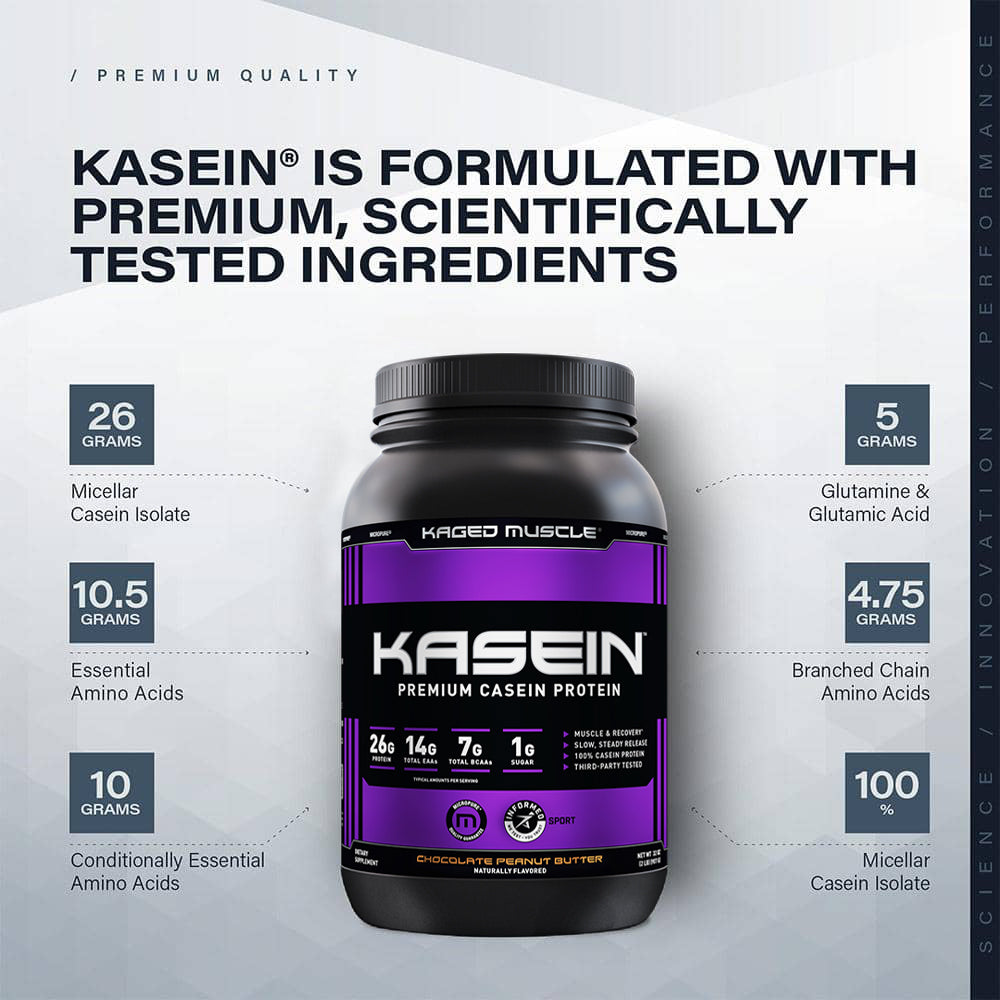
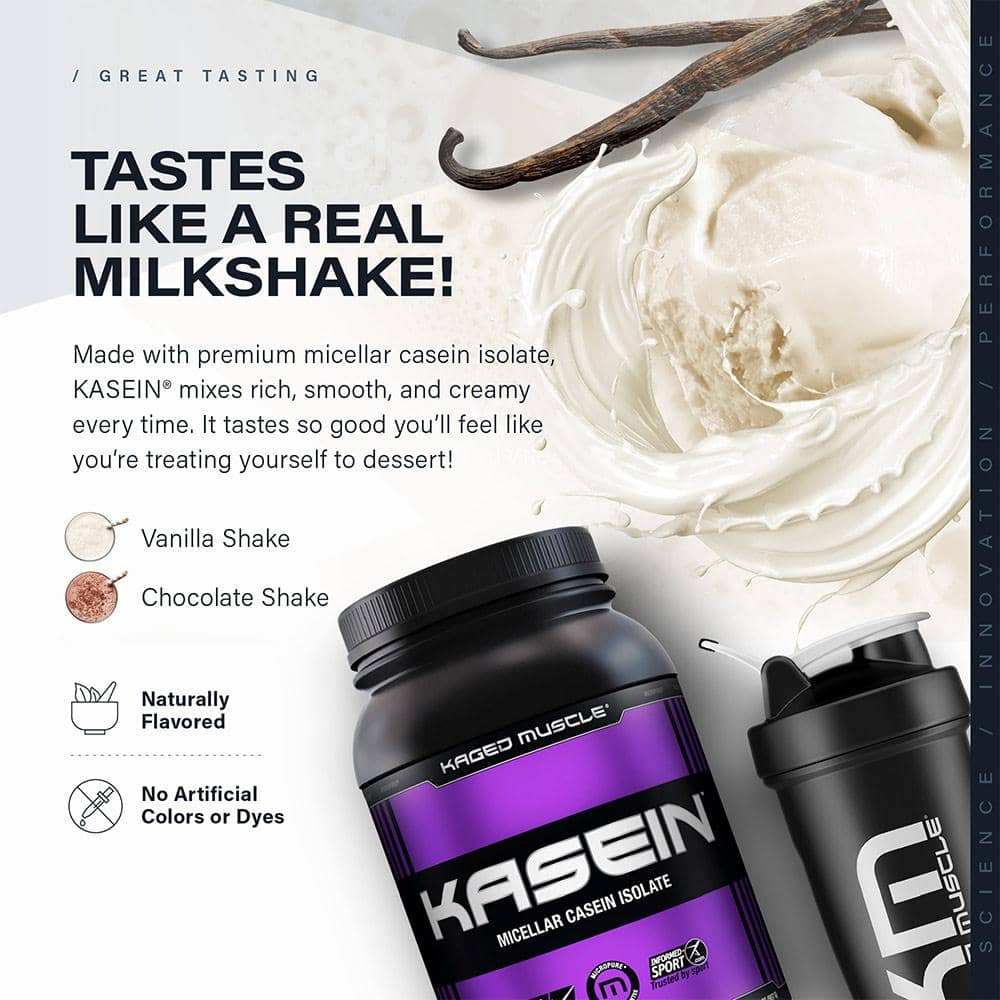
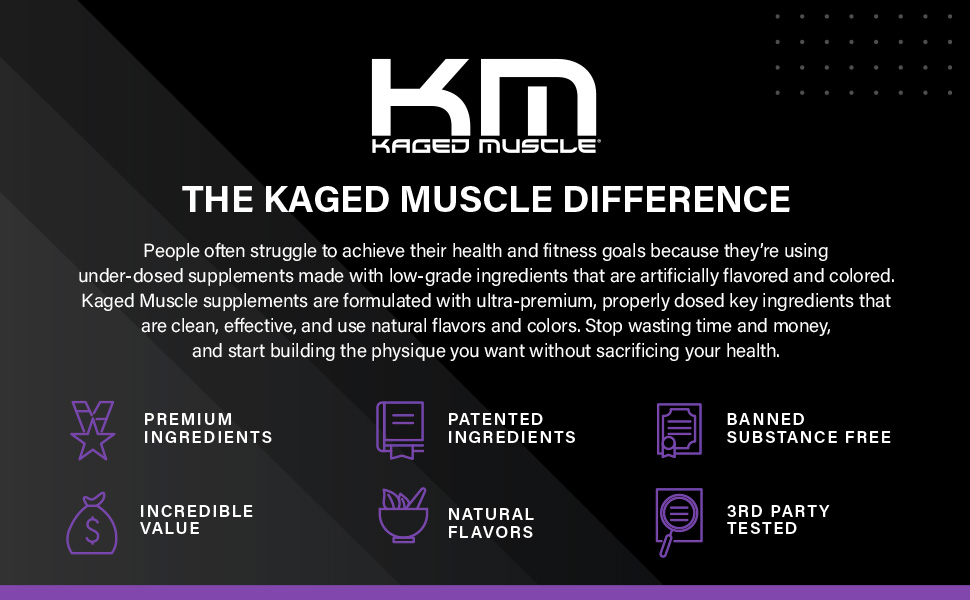

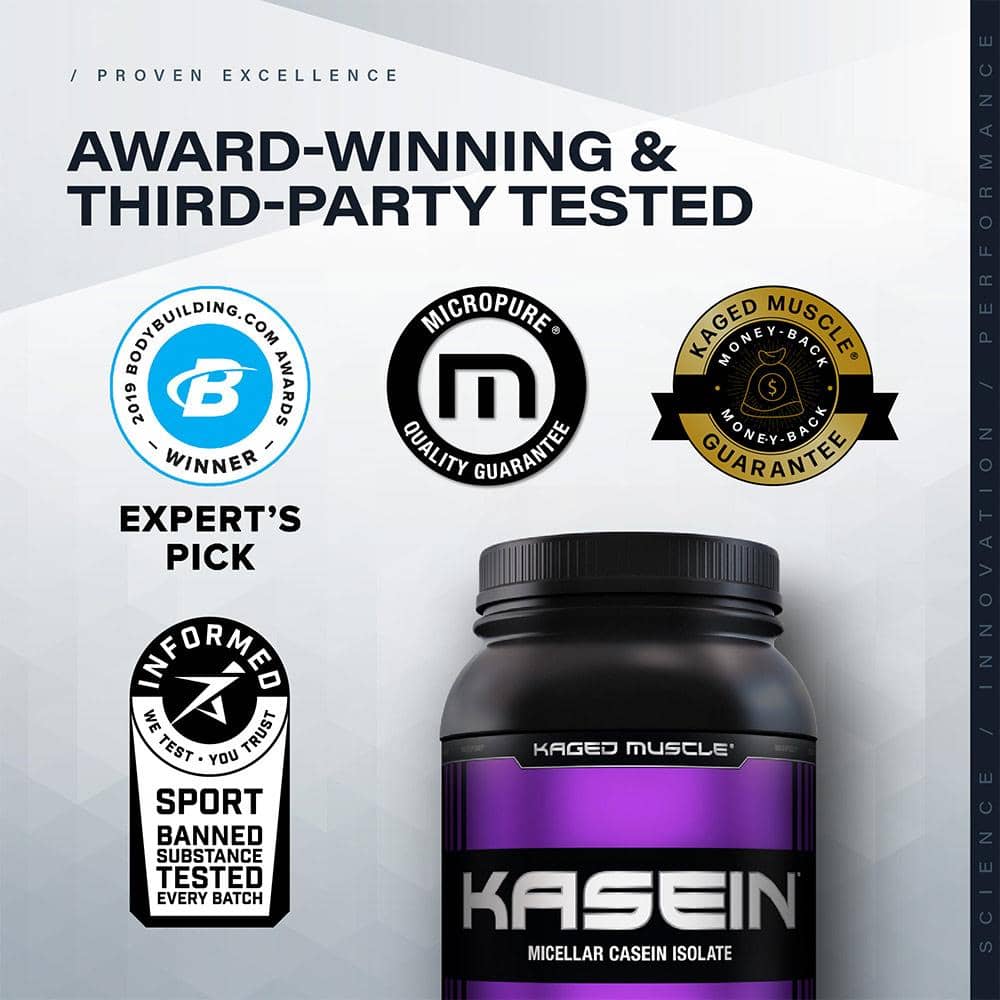




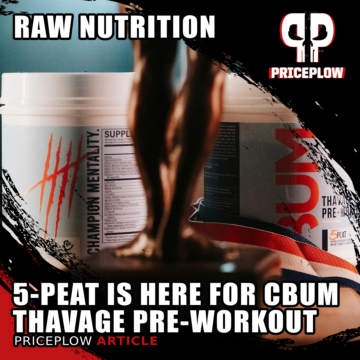


Comments and Discussion (Powered by the PricePlow Forum)